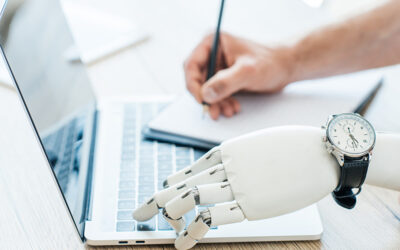
Due to the COVID-19 pandemic, many sectors and companies are affected. Many industries and companies including business process outsourcing companies and third-party service providers are struggling to cope up with the changing work conditions. But with automation technology you can simplify business tasks and deliver a better experience. Automation and robotics are changing the way we work and live. To improve efficiency by reducing human errors and to raise productivity, automation technology is adopted in businesses. It helps in many ways like saving time and energy by accomplishing repetitive tasks or gathering large quantities of data. When some business processes are automated or done using robots, your in-house staff can focus on more important and productive jobs.
With automation, businesses can improve customer support, generate more leads and improve the bond with consumers, and gather large quantities of data for future campaigns. Following are some examples of how companies are using automation technology to prepare for post COVID-19:
- Hospitals support automated systems: Many healthcare systems are facing shortage of nurses to deal with the rush of new patients. So, while governments are concerned about appointing new medical personnel to face this, hospitals are leveraging automated systems to ensure that nurses spend more time taking care of the patients rather than doing repetitive administrative tasks like updating records.
At this time of stress and anxiety, it is very important to free up nurses and doctors from repetitive administrative tasks and make them available for patients. Mater Hospital in Dublinturned to UiPath, a provider of automated solutions, to build an infection control robot that could support their team. It can perform the manual, repetitive testing work that used to take hours in a matter of minutes and also eliminates costly manual errors.
- Government can use automation to process unemployment applications: According to The United Nations International Labor Organization (ILO) estimate, almost 2.7 billion workers worldwide are affected due to quarantine measures, and report that an expected 195 million jobs will be lost due to COVID-19. In the United States alone, nearly 17 million unemployment applications have been filed and the number is on the rise.
The speed and accuracy of processing unemployment applications by the government will have a major impact on what the economy will look like after the pandemic. Without proper policy measures, workers are facing high risk in living and are falling into poverty during this recovery period. Automation will help the government to speed up the process and provide assistance that will keep economies and communities afloat until many businesses reopen.All handwritten forms except trickiest handwritten forms can be read by software robots through Optical Character Recognition (OCR) technology. The use of automation doesn’t end when forms are just uploaded. Robots can support in screening and delivery of payments to citizens by working within different financial platforms and transaction engines to process paperwork.
Automation allows the government to send regular updates through email or texts to citizens waiting on their unemployed benefits. By adopting this technology, the government can maintain a good relationship with the citizens by giving them the financial support they need to feed their families, pay their bills, and engage in the economy until the crisis is over.
- Rescheduling non-urgent appointments by healthcare providers: Healthcare providers use automated systems to reschedule appointments, i.e. “Online Portal,” so that they can reschedule their primary care and non-urgent appointments at their comfort or convenience. The back end of this request system is handled by software robots, which will help to save hundreds of hours healthcare providers would otherwise spend doing paperwork and scheduling follow-ups. This makes the work a lot easier and also helps make sure that patients don’t fall through the administrative cracks as healthcare systems and providers work to take care of the sick.
Right now, the world is facing fear and uncertainty at the same time,while efforts are on to fight the COVID-19 epidemic and overcome it. It is important that businesses do not shut down completely and stay as productive as they can even during these adverse circumstances. They need to innovate and adapt to the new normal so that their employees and customers are kept happy and satisfied. Many industries and companies including business process outsourcing companies are using Robotic Process Automation to continue performing various business functions, freeing up the time for employees to focus on core processes. The objective overall is to utilize digital transformation and robotic process automation in the best way possible and keep the business performing optimally.



